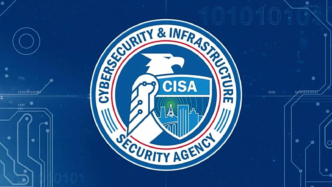Data is the heartbeat of every modern business—and protecting it has never been more urgent. As cyber threats grow more sophisticated and data privacy regulations tighten, organizations need more than antivirus software or basic policies. They need a smart, proactive strategy rooted in data protection best practices.
Whether you’re running a lean startup or managing enterprise-level infrastructure, these proven strategies will help you defend sensitive information, meet compliance standards, and streamline operations without compromising productivity.
Build Your Foundation: Data Strategy, Automation, and Zero Trust
The first step in protecting your data is understanding what you’re trying to protect—and why. Work with business leaders to pinpoint your most sensitive or valuable data and define what kind of protection program your organization needs. Balance is key: too much friction and productivity suffers; too little, and risk explodes.
Once your goals are clear, start automating the most critical steps—especially data classification. Manually tracking every document or file is no longer feasible. AI-powered classification tools can discover, label, and monitor data in real time across endpoints, networks, and the cloud. This not only boosts accuracy but also helps your security program scale with ease.
As threats evolve, zero trust security is essential. It flips the old model on its head: instead of trusting everything inside your network, it verifies every request, every time. The principle of least privilege ensures users only access what they need—no more, no less—making it harder for attackers to move laterally or exploit a breach.
Meanwhile, centralizing DLP (data loss prevention) across all channels is critical. Avoid piecemeal solutions that generate multiple alerts for the same issue. A cloud-native DLP engine offers better visibility and consistency, enabling faster response when incidents happen. Look for solutions that integrate directly with your broader security service edge (SSE) stack.
Don’t forget to secure major loss channels. Email, web, SaaS platforms, and endpoints like USBs or printers can all leak data if left unmonitored. For BYOD users or contractors, browser isolation provides agentless protection—streaming data to the device as pixels while blocking downloads or copy-paste actions.
Scale Your Defense: Compliance, Cloud Posture, and Human Factors
Every data protection strategy must account for compliance. Regulations like GDPR, HIPAA, and PCI DSS aren’t just legal obligations—they’re trust-builders. Implement strong governance practices, keep audit-ready records, and train your team to stay on top of evolving rules. Encryption, monitoring, and audit trails should be built into your routine.
As your cloud footprint grows, so does the complexity. Public cloud and SaaS platforms can expose sensitive data through small misconfigurations. That’s why SSPM (SaaS Security Posture Management) and DSPM (Data Security Posture Management) are must-haves. These tools continuously scan your environment for exposed data, risky integrations, and compliance gaps—automatically alerting or remediating where needed.
Training is where many protection programs stumble. You can’t secure what users don’t understand. Build a security culture from the top down. Educate employees on recognizing risks, using tools correctly, and why protection matters. Some DLP platforms now offer real-time coaching when users trigger incidents, making security part of daily workflows.
Finally, no protection plan is complete without solid incident management workflows. Automate what you can. The right platform should help triage, notify, and resolve data loss events with minimal manual effort—saving time and resources while ensuring no alert falls through the cracks.
Data Protection Isn’t Just Defense, It’s Strategy
Data protection best practices aren’t just about compliance or blocking threats. They’re about empowering your organization to move faster, safer, and with more confidence. As AI reshapes how we store, share, and use data, the stakes are only getting higher.
Investing in smarter data protection today means safeguarding tomorrow’s innovation—and earning the trust of your customers, partners, and regulators along the way.













